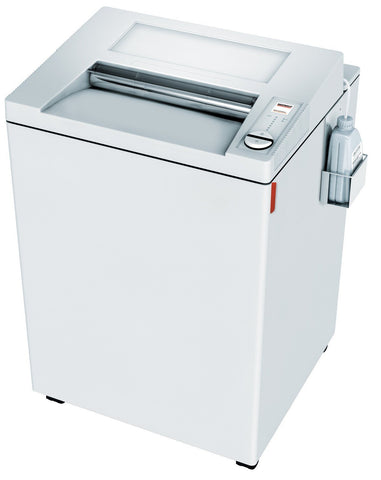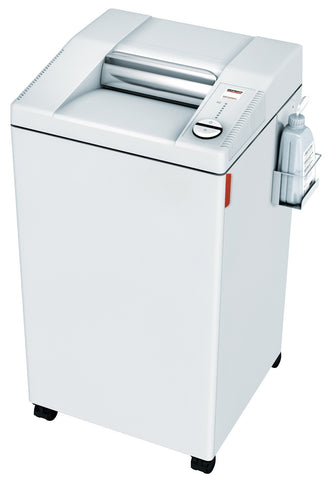Paper Shredder Knowledge You Should Know
Strip Cut & Cross Cut & Micro Cut Shredder Comparison
Strip Cut |
Cross Cut |
High Security |
 |
 |
 |
|
Strip cut shredders are the ideal solution if document security is not a priority when shredding. Documents without personally identifiable information on them can be put through a strip cut paper shredder with no worry. One reason you may prefer a strip cut shredder is for sheet capacity. Strip cut shredders can typically handle more paper per pass that the cross cut equivalent. Recyclability is another huge advantage. Paper run through a strip cut shredder can be re-used as packaging material or animal bedding. |
Cross cut shredders are the norm in many offices. Cross cut shredders offer a higher level of security than their strip cut counterparts. Available in many different security levels, (referring to the size of the shred residue) a cross cut shredder is the ideal solution for everything from daily junk mail to highly sensitive documents. While significantly more secure, shredding speed and shredding throughput may not be as noteworthy as a strip cut shredder. |
Micro cut Shredders are the most secure paper shredder you can purchase. They are required in most government offices and military sites. Though more expensive than strip cut or cross cut, micro cut shredders are worth the higher cost for the added security and piece of mind. The only drawback of a micro cut shredder is the generally low throughput. Most micro-cut shredders can only take around 10 pages per pass. |
Security Levels
There are 7 distinct levels of paper shred. Each one is defined my a different surface area and width. The more sensitive the information you are destroying is, the higher shred level you should use. Getting to know each shred level is important so you can purchase the proper level for your documents.

Level 1 (also known as P-1):
Level 1 shredders are the lowest level of paper destruction. It is used primarily for bulk recycling and volume reduction. Level 1 shredders leave a shred size of <1/2" in width, not to exceed 6.5" squared in area. Although they are quick and simple, a Level 1 shredder may not be the best choice for your home or office. Level 1's are the perfect solution for large scale recycling plants who need to shred newspaper, phone books and more.
Level 2 (also known as P-2):
Level 2 shredders can be either strip cut or cross cut. With a shred size of ≤ 800 mm² for cross cut, or ≤ 6 mm for strip cut, it produces a shred residue that is smaller than a Level 1 shredder. This type of shredder is best for everyday shredding or paper reduction that does not include highly sensitive data or personal information.

Level 3 (also known as P-3):
Level 3 shredders are the most common shred level that customers purchase. Level 3 meets HIPAA and FACTA standards. The same standards that doctors are required to meet when disposing of old patient information and records. A Level 3 would be the perfect addition to your home or office for the destruction of sensitive but unclassified information. A level 3 particle size is ≤ 320 mm² with a strip width of ≤ 2mm.
Video of Level 3 Destroyit 2604 Cross Cut Shredder
Level 4 (also known as P-4):
The Level 4 / P-4 shred level is a good contender for most popular shred size. These shredders can destroy paper to ≤ 160 mm² with a strip width of ≤ 6mm. This is a noticeably smaller shred size that will add an extra layer of protection to your documents and give you peace of mind. The only drawback is that throughput may be diminished compared to level 3 counterparts.
Video of Level 4 Destroyit 3804 Cross Cut Shredder

Level 4 (also known as P-5):
Level 4, or P-5 shredders are becoming more and more popular over time. Even though, this will not effectively shred classified information, it's still one of the most popular choices when shredding other types of data. It's an ideal solution if you would prefer an extra layer of security while destroying Personal Identifiable Information (PII) and Controlled Unclassified Information (CUI)

Level 5 (also known as P-6):
Level 5 (P-6) shredders were the old standard for government organizations before Level 6 (P-7) shredders were introduced. Due to updated regulations, Level 5 shredders no longer comply with NSA regulations for the destruction of classified data. As a result, the number of Level 5 shredders built by manufacturers is dwindling.

Level 6 (also known as P-7):
Level 7 is the smallest shred size of any paper shredder. It is used by many government organizations to destroy top secret classified information. As a result, most Level 7 shredders can't handle any more than 10 sheets per pass, and cannot take papers with staples or paperclips. These items have a tendency to chip the fine teeth of these high security shredders leaving the potential for shred residue to exceed the ≤ 5mm² x ≤ 1 mm specifications.
Video of Level 6 Destroyit 2605 SMC Security Shredder
Important Paper Shredding Terms and Keywords
Shred Size: Shred size refers to the dimensions of the pieces of paper after the document has been shredded.
Shred Throughput: Sometimes referred to as feed, or sheet capacity, it is the number of sheets that can be successfully fed through the paper shredder at once without jamming the feed rollers.
Shred Speed: Typically measured in feet per minute, this tells you how fast the paper shredder is operating.
Feed Opening (Feed Width): Measures the dimensions of the part of the shredder where the paper enters.
Bin/Waste Capacity: Typically measured in gallons, this number will tell you the volume of paper that the waste bin can hold before it must be emptied.
Duty Cycle (Run Time): Recommends the time that the shredder can run continuously before you should give it a break to cool down.









